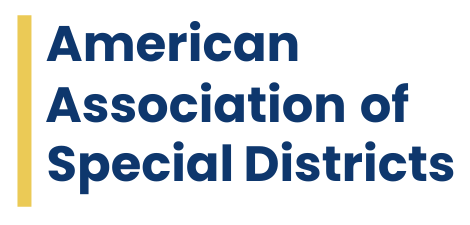The traditionally every-five-year Farm Bill includes important programs for special district services such as USDA Rural Development, forestry, rural healthcare, broadband development, and rural water/wastewater programs.
The likelihood of passing a Farm Bill ahead of this year’s September 30 deadline is looking less likely, as no progress has been made since the House Agriculture Committee passed its $1.5 trillion version of the bill, H.R. 8476 (Thompson), 33-21 back on May 24. The Senate has yet to produce its version of the Farm Bill.
With only three full legislative weeks before the deadline, there is an increasing likelihood that the bill will need to be extended.
This article covers the Farm Bill and select policies of interest to America’s special districts.
What is the Farm Bill?
Although traditionally referred to as the “Farm Bill” with programs addressing agriculture commodity supports and insurance, rural development, conservation, and forestry (of which the latter three special districts interact with regularly) – it also includes major federal programs that deliver food and nutrition assistance to families in need. Ag commodity and nutrition programs, with few district touchpoints, are usually the heated debate topics, and have mired the Farm Bill’s progress so far this cycle. In fact, the Farm Bill was due for passage in by September 30, 2023. After expiration, Congress agreed to a one-year extension of the 2018 Farm Bill.
H.R. 8467’s programs span 12 titles across 956 pages and totals roughly $1.5 trillion . We will cover a handful of items that caught our attention across three key titles for special districts:
Rural Development
The USDA’s Rural Development can provide critical support to rural communities’ facilities, infrastructure, programs, and community services – and special districts are often prime candidates for services from technical assistance and capacity building to grants and finance.
Water & Wastewater
This House Farm Bill would reauthorize and enhance assistance for community facilities – especially water resources. The bill would codify the “Rural Water and Wastewater Circuit Rider Program” through the USDA Rural Utilities Service and authorize $25 million through 2029. The program would establish a network of rural water circuit riders across all states and territories.
The goal of the program would be to assist rural water systems operate effectively and efficiently and achieve long-term sustainability and compliance with federal clean water and drinking water standards. The program would allow circuit riders to offer special districts technical assistance on a variety of needs – ranging from board training, financial management, regulatory compliance, loan application, cybersecurity needs, and more – for communities under 10,000 population; and it would allow eligibility for communities of 50,000 or fewer seeking disaster assistance.
Further on the water front – the bill would reauthorize the Water and Waste Disposal Loan and Grant Program. It would also offer financial relief and assistance to distressed public water agencies through low-to-no interest loans, principal forgiveness, or modification of an existing loan servicing a distressed water system as long as a financial plan is in place for sustainability.
Healthcare
Also included in the House’s version of the Farm Bill is the Rural Hospital Technical Assistance Program, aimed to fill voids in technical assistance and training needs to rural hospitals. The program would work with hospital facilities in medically underserved communities of 50,000 or fewer residents to conduct a full needs assessment of the operation and services to better approach financial strategies and identify the best approach to federal funding opportunities. Aside from preventing more hospital closures, the goal of this program would be to mitigate further closures of rural hospitals while increasing the quality of healthcare in rural communities.
Expanding telehealth continues to be a federal priority. The bill, as passed out of the Ag Committee, would reauthorize the Distance Learning and Telemedicine Program at $82 million through 2029. The program provides grants to eligible healthcare facilities for the construction of broadband amenities to meet telehealth needs of the community.
Broadband
The ReConnect Loan and Grant Program could see changes, including a merger with the Farm Bill Broadband Program.
The House Farm Bill raises the minimum download/upload speed threshold a project would need to provide for ReConnect eligibility from 25/3 to 50/25. Further, projects aiming to serve communities currently with internet speeds below 25/3 would be prioritized. Eligible projects could receive loan guarantees on projects enhancing internet in communities where 75+ percent of people lack 25/3 speeds. Grants would be available for communities where 90+ percent of the community is stuck on the slow speed.
Finally, the bill codifies the Broadband Technical Assistance Program, which would expand access to broadband technical assistance on feasibility studies and pursuing USDA grant and finance applications. The program would be open to local governments and other organizations seeking to provide reliable high-speed internet in rural areas where it currently lacks.
Conservation
The House Farm Bill’s conservation title was a flashpoint in debate, as the underlying bill would reallocate $14 billion in unused funding from climate-oriented programs and solutions sourced in the Inflation Reduction Act and place it toward banner federal conservation programs. Conservation programs benefiting from the House shift include the Environmental Quality Incentives Program (EQIP), the Regional Conservation Partnership Program, Watershed Protection and Flood Prevention programs, and the Conservation Stewardship Program.
In all, federal agencies will be encouraged to incorporate use of new precision technology in agriculture practices to increase efficiency in agriculture production while also homing in on soil erosion and improving water conservation practices. Learn a little more about “precision agriculture technology” here.
The House Farm Bill, as passed out of committee, aims to drive efficiencies across federal natural resource conservation programs.
The bill would grant the Natural Resources Conservation Service (NRCS) the authority to directly hire employees. Provisions would also broaden accessibility to NRCS programs. The bill would remove the adjusted gross income limits for eligibility to conservation programs. Currently, individuals and entities must earn more than 75 percent of their adjusted gross income from agriculture.
On other conservation notes – the Technical Service Provider, or TSP, program offered though NRCS would be streamlined and reviewed.. The bill would require USDA to establish a clear approval processes and timelines, including protocols on how to approve a non-federal entity to become a certifier within 60 days upon applying.
Forestry
The House version of the legislation does well to include several policies on wildfire and land management, including specification of what is considered an “at-risk community.”
Working within the confines of the Health Forests Restoration Act of 2003, the term “at-risk community” and the Wildland Urban Interface (WUI) is defined as “a group of homes or other structures with basic infrastructure and services at risk from wildfire as recognized by a local, state, regional, Tribal, territorial, or national wildfire risk assessment.” It also specifically defines communities listed in this publication in the January 4, 2001, Federal Register. (Recommended: ctrl+F in the webpage to find your community)
Further, landscape scale priorities remain intact for forest management and restoration. These programs are important for public-private partnerships, including special districts’ conservation and mitigation activities, to effectively partner on land management and fire mitigation needs. The bill would also authorize more cooperative agreements and partnerships for prescribed burns on U.S. Forest Service lands.
Special districts concerned with emergency/rescue services, wildfire response, water conservation, and watershed health on federal lands in counties with a high proportion of US. Forest Service land gain a policy win with the three-year reauthorization of the Secure Rural Schools and Community Self-Determination Act (SRS).
Under Title III of the program special districts may seek reimbursement or funding opportunities through their counties for eligible activities on federal land: emergency response, mitigation efforts, cover emergency training costs, provide/expand broadband services, and carry out Firewise Communities programs. SRS presents special districts and counties with opportunity to collaborate on mutually-beneficial funding solutions in service to the community – because counties that share SRS Title III funds with districts see a small enhancement in their Payment In-Lieu of Taxes calculations, which special districts are not entitled to directly receive. Title III allocations to counties totaled $14.84 million for the current program year.
Notably absent from the Forestry Title, however, is the extension of the Community Wildfire Defense Grant (CWDG) program, which is a $1 billion program established with passage of the Infrastructure Investment and Jobs Act. CWDG is a collaborative program for to mitigate identified fire threats in communities, offer education and outreach, and implement action plans. The program expires in 2027.
Got questions? We can track down some answers. Email cole@americasdistricts.org.

